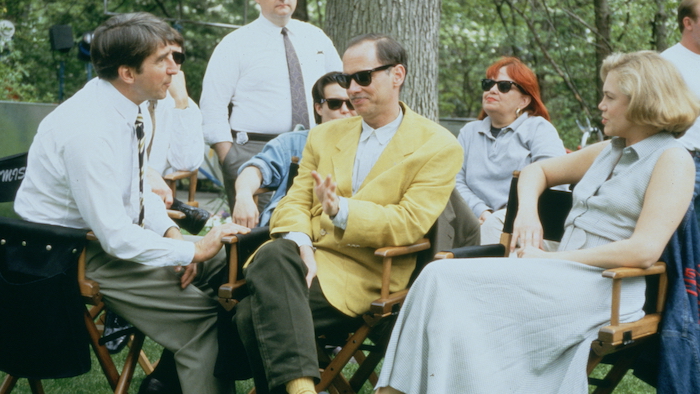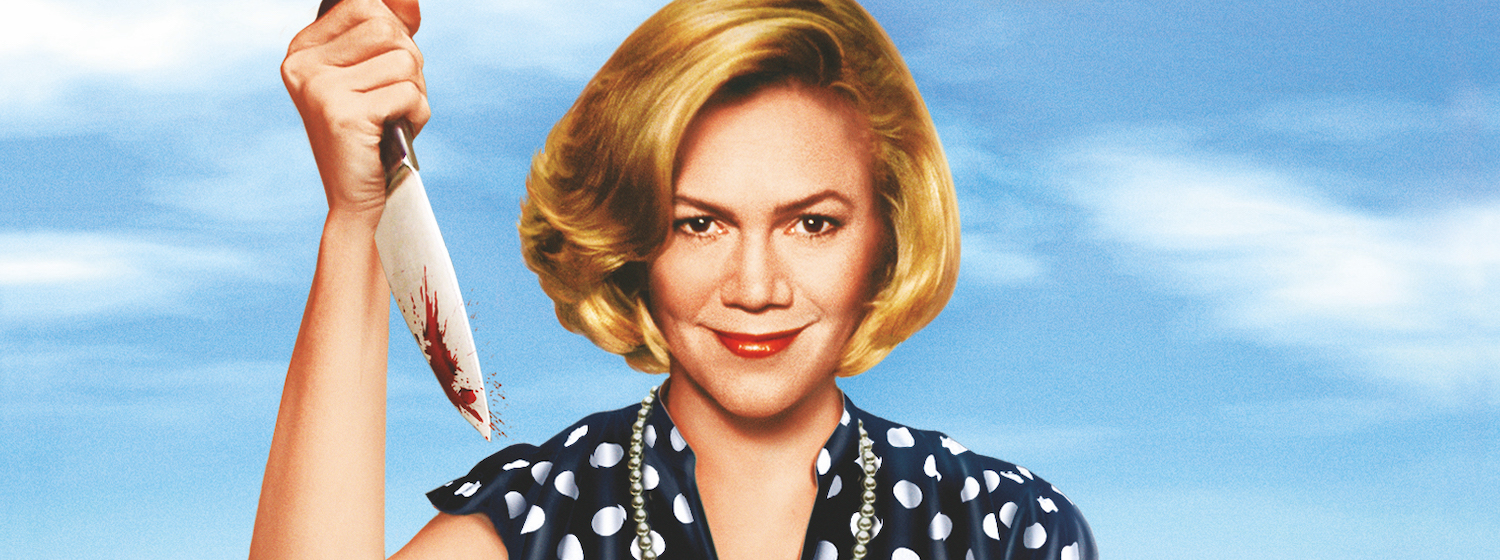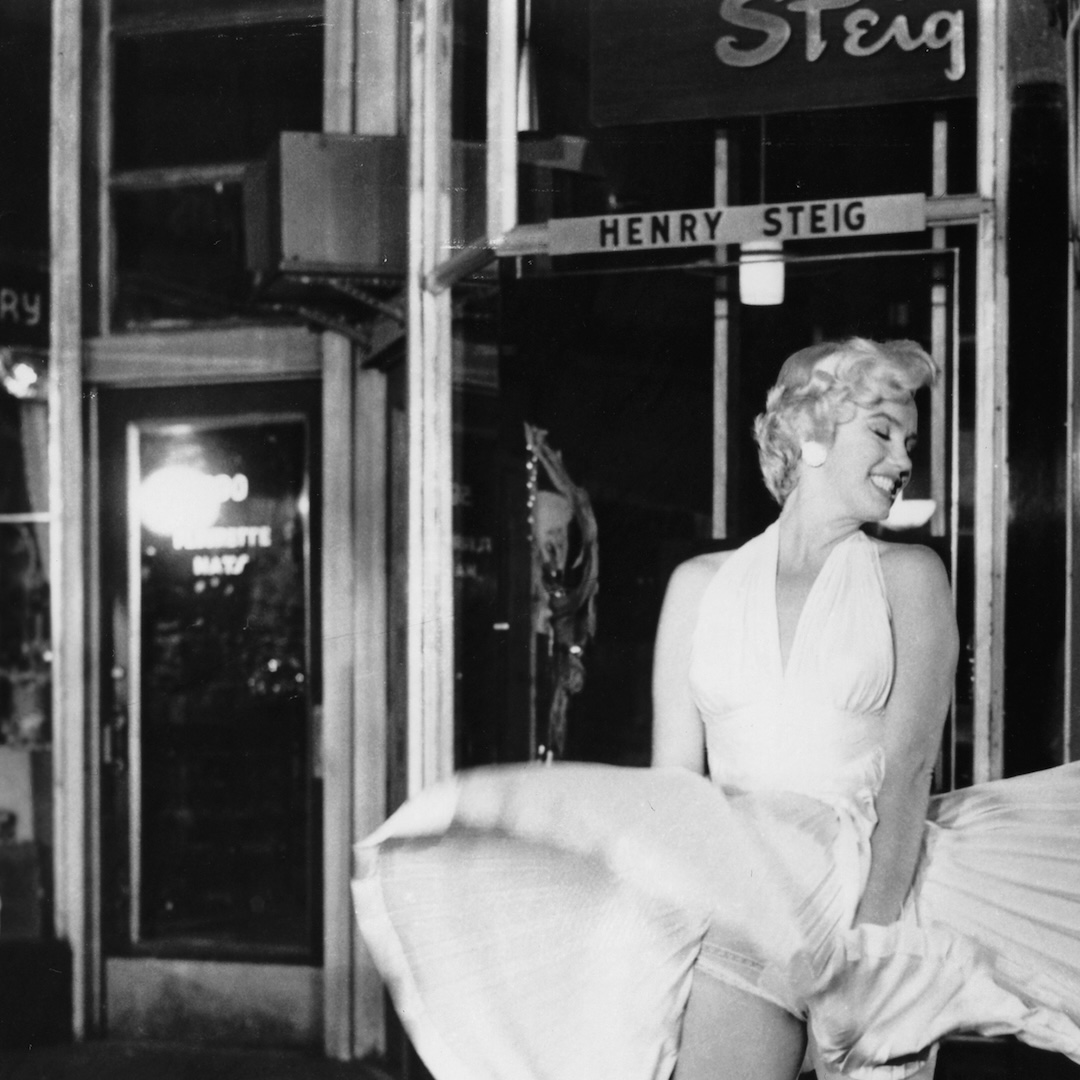Serial Mom: How John Waters Predicted True Crime’s Morbid Appeal
May 7, 2020 By Go BackWhen shooting Serial Mom in Baltimore’s suburbs early in 1994, director John Waters – the celebrated, if not worshiped King of Filth – acted as a soothsayer of sorts, predicting the media frenzy that would envelope North Americans later that year. He also satirized the obsession with true crime that is currently at its zenith. Coronated with various loving monikers, such as “The Duke of Dirt,” “The Pope of Trash,” “The Prince of Puke,” and the “Ayatollah of Assholes,” Waters’s unique brand of distaste applied throughout his life and filmography to an obsession with serial killers. He positions the entire film, with its disingenuous opening text, as a true crime tale, despite clearly being a work of fiction. And if Serial Mom, starring Hollywood A-lister Kathleen Turner, was a more PG family-friendly entry for Waters (comparatively, remember that his first bonafide hit, 1972’s Pink Flamingoes notoriously concluded with its star Divine ingesting dog feces), it nevertheless exudes its director’s patented trashiness.
As was commonplace with all Waters’s films, Serial Mom is set just outside Baltimore, in the middle-class suburb of Towson, where family matriarch Beverly Sutphin (Turner) cares for her family with domestic prowess. Her dentist husband (Law & Order’s Sam Waterston) is doting, and her children, Misty (played by Ricki Lake of Waters’s 1984 Hairspray) and Chip (Matthew Lillard in his first credited screen role), represent the average American teenager. When her neighbourhood is scandalized by a rash of dirty prank calls, Beverly pretends to be shocked only to reveal to the audience (but not yet her family), that she is the telephone bandit. With a rigid moral code, Beverly anonymously dispenses justice for seemingly minor faux pas (wearing white after Labour Day, snatching parking spaces at the grocery store, improper recycling habits), but as the perceived indignities are aimed at her family, the violence escalates and Beverly turns Lizzie Borden in defense of her family. When a math teacher questions the mental stability of Chip – a result of his obsession with slasher films – Beverly runs him over with her car. When Misty is stood up by her boyfriend, her mother murders him with a fire poker in a public restroom. Subsequent murders ensue involving scissors, air conditioners, and butcher’s knives, meanwhile the town and the Sutphin family realize the truth behind the grizzly crimes. If Beverly starred in her own mid-century sitcom, it would be “Leave it to Cleaver.”

1994 was a memorable year in the annals of American true crime. The murder of Nicole Brown Simpson and Ron Goldman in June of that year (Serial Mom was released in April) made headlines around the world, as did OJ Simpson’s subsequent attempted Ford Bronco escape, trial and eventual acquittal. What evolved throughout those years, and years subsequent, was an unprecedented media frenzy. It was deemed the “trial of the century” for the shocking brutality at the hands of an American football hero (and B-film actor) alleged by the prosecutors, its twists and turns in court, and its tragically unsatisfying verdict. The trial in Serial Mom, despite the film being written and produced well in advance of the Simpson case, mimics the real-life frenzy of 1994 and 1995. With her mother on trial, Misty even makes t-shirts to sell outside the courtroom (as happened to much distaste at the Simpson trial). Even Suzanne Somers makes a cameo appearance as the actress poised to play Beverly in the true crime movie of the week. At the heart of Waters’s trashiness is always satire – and most often, as is the case with Serial Mom, razor sharp satire. Waters, as a true crime aficionado himself, understands the appeal of grizzly, unimaginable human tragedy, and unsurprisingly, he riddles Serial Mom with dozens of references to murder and crime sprees, both in real-life and imagined. What follows is a Waters-approved top hits in True Crime history:
PATTY HEARST (1954–)
Alleged Crime: Armed Robbery, 1974. Tried and convicted in 1976.
The granddaughter of famed newspaper magnate William Randolf Hearst was kidnapped by the Symbionese Liberation Army and held captive for over a year. They forced her to rob a bank and she was later caught by police. At trial she described her rape and brainwashing, but the prosecution argued she joined the SLA of her own accord. She was convicted and sentenced to 35 years in prison until President Jimmy Carter commuted her sentence (later President Clinton granted her a pardon). Hearst’s trial was the “trial of the century” prior to the OJ Simpson case, creating an international media frenzy.
Serial Mom connection: A close friend of Waters, she plays a juror in Beverly Sutphin’s case. Convinced of Beverly’s innocence she enrages the murderess for wearing white shoes after Labour Day.
TED BUNDY (1946–1989)
Crime: The murder of at least 30 women (more assumed). Tried and convicted in 1978.
One of the most notorious and publicized of serial killers, Bundy is most often noted for his charming appeal and ability to manipulate women that he had intimate, longstanding relationships with. He denied the murder of 30 women for nearly a decade before confessing in 1989, just shortly before his execution. Some experts believe him responsible for the killings of over 100 people.
Serial Mom connection: Beverly Sutphin hides cassettes tapes of Bundy’s messages to her sent from prison. When her husband discovers them and listens to the intimate missives, it’s the voice of John Waters acting as Bundy.
CHARLES MANSON (1934–2017)
Crime: First-degree murder and conspiracy to commit murder for the deaths of seven people. Tried and convicted in 1971.
Probably the most notorious serial killer in history – Manson formed a cult that was responsible for several murders, including the Tate-LaBianca murders in 1969. John Waters has befriended several Manson Family women, whom he strongly believes should be released from prison.
Serial Mom connection: While searching through the Sutphin garbage, detectives discover Beverly’s copy of Helter Skelter: The True Story of the Manson Murders, one of the bestselling true crime novels of all time, written by Vincent Bugliosi and Curt Gentry and published in 1974.
THE HILLSIDE STRANGLER aka Kenneth Bianchi (1951–) and Angelo Buono Jr. (1934–2002)
Crime: Charged collectively with ten counts of murder, plus an additional three murders for Bianchi. Tried and convicted in 1980.
The murders of the Hillside Strangler were discovered to have been perpetrated by two cousins, but police withheld the dual nature of the perpetrator from media. Bianchi and the much younger Buono Jr. terrorized the Los Angeles area in 1977 and 1978, murdering 10 women between the ages of 12 and 28.
Serial Mom connection: Chip Sutphin asks his mother if she’s ever heard of the Hillside Strangler early in the film after reading about Bianchi’s achievement of a college degree from prison.

Richard Speck (1941–1991)
Crime: Eight counts of murder. Tried and convicted in 1967.
Speck broke into a student nurse dormitory in Chicago, holding 8 student nurses captive, and systematically tortured and murdered each, one-by-one in July 1966. A ninth woman was able to successfully hide under one of the beds where the nurses were held captive. Speck was sentence to the death penalty, but the ruling was overturned.
Serial Mom connection: Beverly Sutphin’s husband finds a signed portrait of Speck posing as a strong man and addressed to “Dearest Beverly” in an envelope under their bed.
Lizzie Borden (1860–1927)
Alleged Crime: Two counts of murder. Tried and acquitted in 1893.
Borden was accused of murdering her father and stepmother in 1892 with an axe in Massachusetts. Her trial produced an acquittal despite most believing her guilty. The Borden murders were considered the first media frenzy surrounding a murder at the hands of a women in history, and the true crime genre has been obsessed ever since, with multiple books, films, plays, etc. dedicated to Borden.
Serial Mom connection: A VHS of The Legend of Lizzie Borden (1975), a television movie starring Bewitched’s Elizabeth Montgomery as Lizzie Borden is on display in the movie rental store where Chip Sutphin works.
Henry Lee Lucas (1936–2001)
Crime: Eleven counts of murder including his mother. Tried and convicted in 1983 along with his accomplice Ottis Toole.
The lovers and serial killers Lucas and Toole murdered, and in some cases cannibalized, eleven victims on a crime spree that spread across America in the 1970s – first with Lucas acting alone, and then later joining forces with Toole. The couple would claim to have been responsible for over 600 deaths, although this number is largely assumed to be false. Lucas’s murder spree dates back to the 1960s, having murdered his sex worker mother when he was 23 years of age, having already murdered his first victim at the age of 14.
Serial Mom connection: Chip Sutphin asks Beverly is she’s ever seen the film Henry Portrait of a Serial Killer (1985), which was a salacious horror film based on the crime spree.
Serial Mom premieres May 9 at 9pm ET on Hollywood Suite 90s Movies











 Follow us on Instagram
Follow us on Instagram